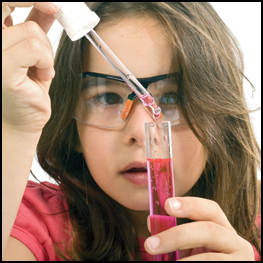
You may think that vision is the same as sight. But sight (20/20) provides the input for a child’s learning, while vision represents a complex system. When working efficiently, this system helps a person process, understand and relate new information to knowledge already gained.
When it’s not working, a child’s visual system can contribute to learning problems. Professionals have also found that often it’s not “memory,” “attention span” or “intelligence” that causes children problems in school. It is a lag in their ability to recognize what they see, relate it to what they already know and then use it as a base for future understanding.
Sound complicated? It is, a little. A child’s ability to perform visual tasks (such as reading and studying) depends on the ability to synchronize thinking and seeing. These work together to give a perceptual and conceptual understanding of the material and therefore gain meaning from what is taught.
Visual skills such as focusing, following moving objects, aiming, turning the eyes as a team, depth perception and other abilities can be inefficient or poorly integrated. This can put great strain on a child. Their attention is spread between trying to make the visual system work and understanding the material. Experts have found that when anyone’s attention is spread between a number of tasks, it reduces the efficiency of the tasks. Think of the last time you tried to do two things at once. Was it easy? Did you do both as well as you wanted to? Or did one (or both) tasks suffer?
The ability to gain knowledge from what is seen is reduced when energy is used to see. This energy would be spent comprehending the information instead. With an inefficient visual system, a person works harder to gain meaning from what they are trying to see or understand. All this can occur in an individual who has 20/20 sight. What developmental optometrists know is that there is a very important relationship between vision and the brain. The two work together so closely that vision and intelligence and understanding are almost synonymous.
Vision therapy serves to help patients strengthen the link between vision and intelligence. Through the use of lenses and activities, it provides a patient with both development and learning experiences. The patient experiences conditions in which the old inefficient visual habits are changed into new behaviors. More efficient vision gradually develops by replacing old habits. Once visual skills are improved through vision therapy and become subconscious, it frees up energy and focus for actual learning. The less stressed mind is freed to focus on the task at hand.
Dr. Brent W. Neufeld, OD, is a developmental optometrist who has been helping children achieve their potential through perceptual learning therapy services in Calgary since 2003. His practice, Calgary Vision Therapy, is located at Suite 130, 2880 Glenmore Trail SE. For more information on vision and learning, check out his website, www.calgaryvisiontherapy.com.
Calgary’s Child Magazine © 2024 Calgary’s Child